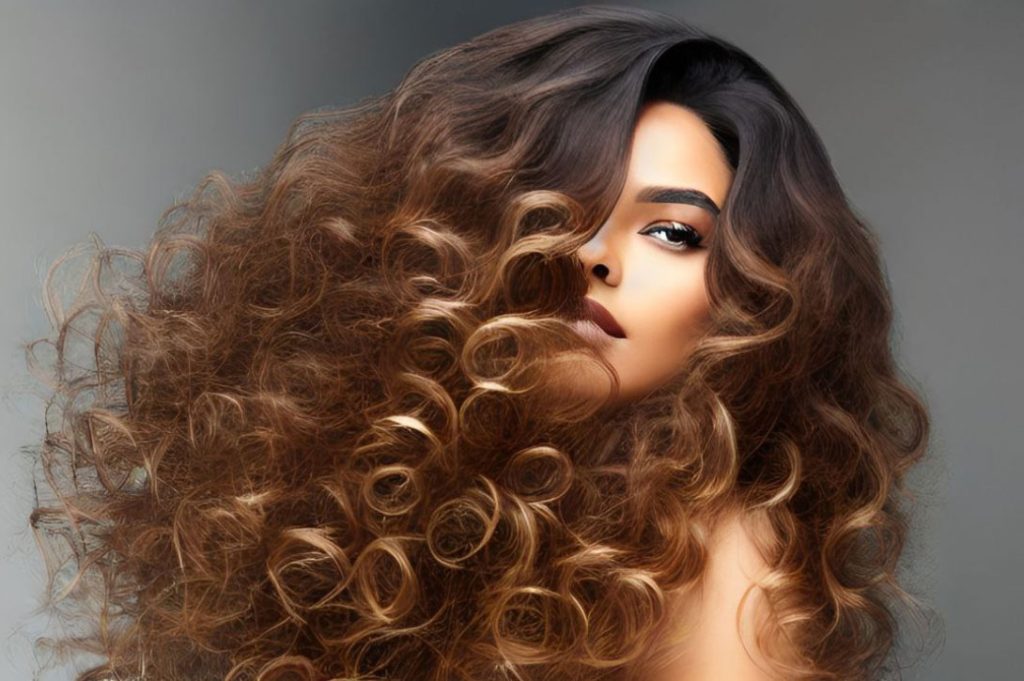The Science of Sebum Distribution in Hair: Straight vs. Curly Textures
Hair, regardless of its type, is a complex biological structure. The way it interacts with the scalp’s natural oils, also known as sebum, can significantly influence its health, appearance, and feel. In this article, we’ll delve deep into the nuances of how sebum interacts differently with straight to wavy hair textures compared to curly hair, and the subsequent care protocols for each hair type.

Understanding Sebum and Hair
Sebum is an oily substance produced by sebaceous glands located next to hair follicles on our scalp. It serves to:
- Lubricate the hair and scalp, preventing dryness.
- Offer a natural protective barrier against environmental damage.
- Provide luster and shine to the hair.
Sebum Dynamics in Straight to Wavy Hair
1. Closed Cuticle Structure:
Straight to wavy hair textures typically possess a closed or flatter cuticle structure. This means the outer layer of the hair strand lies flat, leading to a smoother hair surface.
2. Sebum Distribution:
In these hair types, the flat cuticle means that sebum produced at the scalp doesn’t get absorbed into the hair shaft quickly. Instead, it sits atop the hair strands, often giving it an oily appearance.
3. Daily Brushing for Sebum Management:
For straight and wavy hair textures, brushing is a beneficial routine. Not only does it help in detangling, but it also assists in distributing the sebum from the roots to the tips, providing the entire hair length with natural luster and protection.
Sebum Dynamics in Curly Hair
1. Raised Cuticle Structure:
Curly hair is characterized by a naturally raised or open cuticle structure. This makes the hair’s surface rougher and more porous.
2. Sebum Absorption:
Due to the raised cuticle, curly hair tends to absorb the sebum at the scalp. As a result, the natural oils don’t get a chance to travel down the hair strand. This phenomenon is why individuals with curly hair often experience oily scalps but dry mid-lengths and ends.
3. Limited Brushing:
Brushing curly hair daily is not recommended. Not only can it disrupt the natural curl pattern, leading to frizz, but the act of brushing doesn’t effectively distribute sebum through curly hair due to its structural nuances.
Implications for Haircare
- Straight to Wavy Hair: Individuals with these hair types should consider daily brushing to ensure even sebum distribution. It might also be beneficial to shampoo more frequently to manage oiliness, especially close to the scalp.
- Curly Hair: For curly-haired individuals, moisturizing products can be essential, especially for the hair’s lengths and ends. It’s also crucial to avoid over-shampooing, which can strip the hair of its natural oils, exacerbating dryness. Brushing should be minimized and done gently using wide-toothed combs or specialized detangling brushes.
Conclusion
The interplay between hair type and sebum distribution has profound implications for hair health and care routines. By understanding the unique needs of different hair textures, individuals can make informed choices, ensuring their tresses remain vibrant, healthy, and beautiful. Hair is more than just a style statement; it’s a testament to the body’s intricate biology and the art of personalized care.






